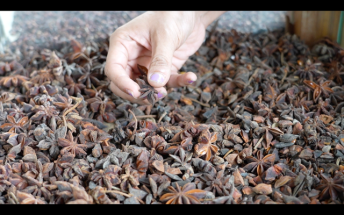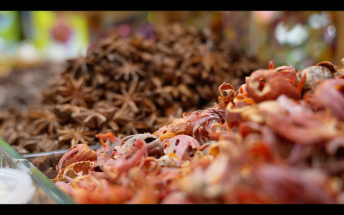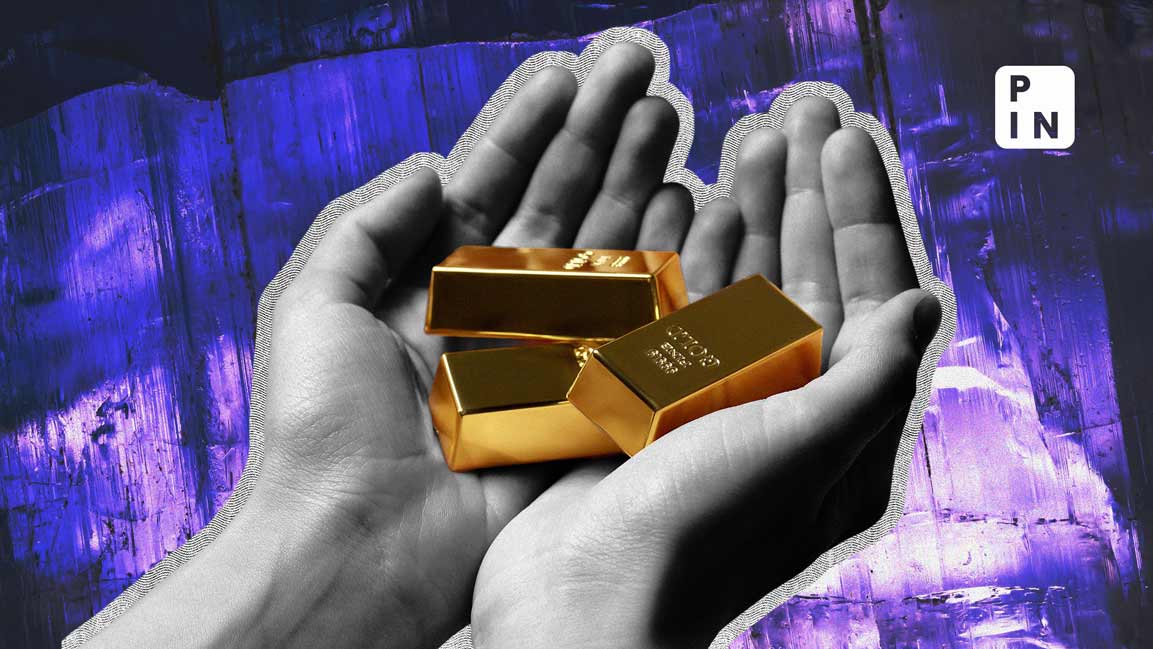- | 10:35 am
Tracing Indian spice trade through the history of Mattancherry
We explore the rich spice heritage that put India, and particularly this island in Kerala’s Ernakulam district, on the world map

Video editor: Rahul Sanpui
Illustrations: Chetan Jha
As you stroll through the bustling streets of Jew Street, you cannot overlook the iconic Star of David adorning the entrances of several rows of houses. The bars on the windows mirror the Israeli flag in hues of white and blue, while Hebrew inscriptions tell tales of a time when Mattancherry was a bustling hub for Jewish settlers.
The vivid narratives are further enriched by the enticing fragrance emanating from a blend of the finest ginger, pepper, turmeric, cardamom, and cloves, lingering in the air from nearby warehouses.
This aroma mingles with the lively banter of the locals, providing a glimpse into the times when this area was central to the spice world.
Located less than 10 km from the heart of Kerala’s Ernakulam district, this island of Mattancherry stands as a living testament to its vibrant spice and tea trading legacy.
Press Insider explores the rich spice heritage that put India, and particularly Mattancherry, on the world map.

A Spicy Story of the Past
The rich history of the spice trade in Kerala traces its origins to ancient times. Long before the European sailors navigated the seas to the Malabar coast, Arab traders had been steering the reins of the spice trade.
Muziris, an ancient port in Kerala, was a thriving hub for spice trade, drawing merchants from as far off as Rome, eager to exchange gold for the sought-after black pepper.
However, the 14th century saw a devastating flood in the Periyar River that led to the abandonment of Muziris. But the spice trade found a new home in Mattancherry, which carried the legacy forward, emerging as a vital trade center.
The turn of the 15th century brought a significant shift when Portuguese trader Vasco da Gama discovered a direct sea route to India in 1498, catapulting this region to become the global epicenter for spice trade.
Historical records show a bustling trade network encompassing 31 nations from Europe, Asia, and the Far East, showcasing a thriving marketplace rich in culture and diversity.
Today, Mattancherry has transformed into a melting pot coastal enclave where different cultures, beliefs, customs, and faiths coexist.
Spice Farming: A Cornerstone of Kerala’s Economy
For generations, spice farming has been a cornerstone of Kerala’s local economy. The world’s first, or rather only, pepper exchange was set up at Jew Town in Mattanchery.
Kishor Shamji, president of the Indian Pepper and Spice Traders, Growers, Planters Consortium (IPSTGPC), told Press Insider that his father was among the first few Gujarati merchants who had settled in Kerala.
Proudly calling himself the ‘Spice Boy from Kutch’, he recalled that today there is a thriving community of Gujarati businessmen in the town who have become pioneers of the trade.
“In the early days, India was producing 75,000-85,000 tonnes of pepper. Russia (then USSR) was our main market due to bilateral trade agreements. Exports were booming, and India was leading in international competition. Even the US sourced pepper from India. In the early 1960s, it is said that Dhirubhai Ambani would buy spices from this region to supply to the Bombay (now Mumbai) market and then export to Aden in Yemen,” Shamji said.
As a pioneer of pepper trade in the country, Shamji said black pepper was the monopoly of Kerala until the 17th century, but gradually, the spice market began losing its dominance.
Businesses went bankrupt, and some even moved back to their home states after several generations. After the trade diversified to neighboring states, several decided to convert their spice stores into antique shops catering to tourism, and others sold their sea-facing warehouses to art galleries like the Kochi Biennale, Shamji added.
Global challenges
Even though the Indian spice market finds its global standing diminished, the nation steadfastly remains the chief producer, consumer, and exporter of spices, accounting for a substantial 40% of the global trade.
“Pepper used to be called the king of spices and was the highest earner in the spice industry. That status is gone now,” said a producer in Mattancherry who declined to be identified.
This decline can be attributed to a myriad of factors such as volatile international demand, fierce competition from existing markets in Southeast Asia, and the burgeoning spice industries in Latin American and African nations.
Exports of Indian pepper have suffered a substantial dip due to the steep pricing, IPSTGPC’s Shamji said.
“Today, our pepper sells for $6,000 in the world market, whereas you can buy it at $3,500 from Vietnam. In international seminars, Germany, USA, and all other European countries speak highly of the quality of Kerala spices, but when it comes to purchasing, they choose Brazilian pepper and Vietnamese pepper, which are cheaper and of lower quality,” he added.
Bhavesh Sundarani, a broker from Mattanchery, said: “Vietnam has scaled up its production to 200,000 tonnes, a stark contrast to our 70,000 tonnes. The Indian traders largely cater to domestic demands. Moreover, Karnataka and Tamil Nadu have ramped up production. Nearly 25,000-30,000 tonnes are produced in Karnataka, 25,000-30,000 tonnes in Kerala, and 7,000-8,000 tonnes in Tamil Nadu.”
Despite the production of an impressive 75 out of the 109 spice varieties recognized globally, India utilizes about 80% of this yield for domestic consumption, setting aside a mere 15-20% for exports.
An alarming statistic from 2021 shows a 13% downturn in spice production, with exports receding from 1.75 million tonnes (mt) in 2020-21 to 1.53 mt in the subsequent year.
Industry stakeholders suggest that a revision in governmental policies to enhance export avenues, bolstering storage infrastructures for farmers, and formulating state-centric policies might infuse new life into the spice trade.
This is the first part of a series that takes a deep dive into India’s spice trade.














